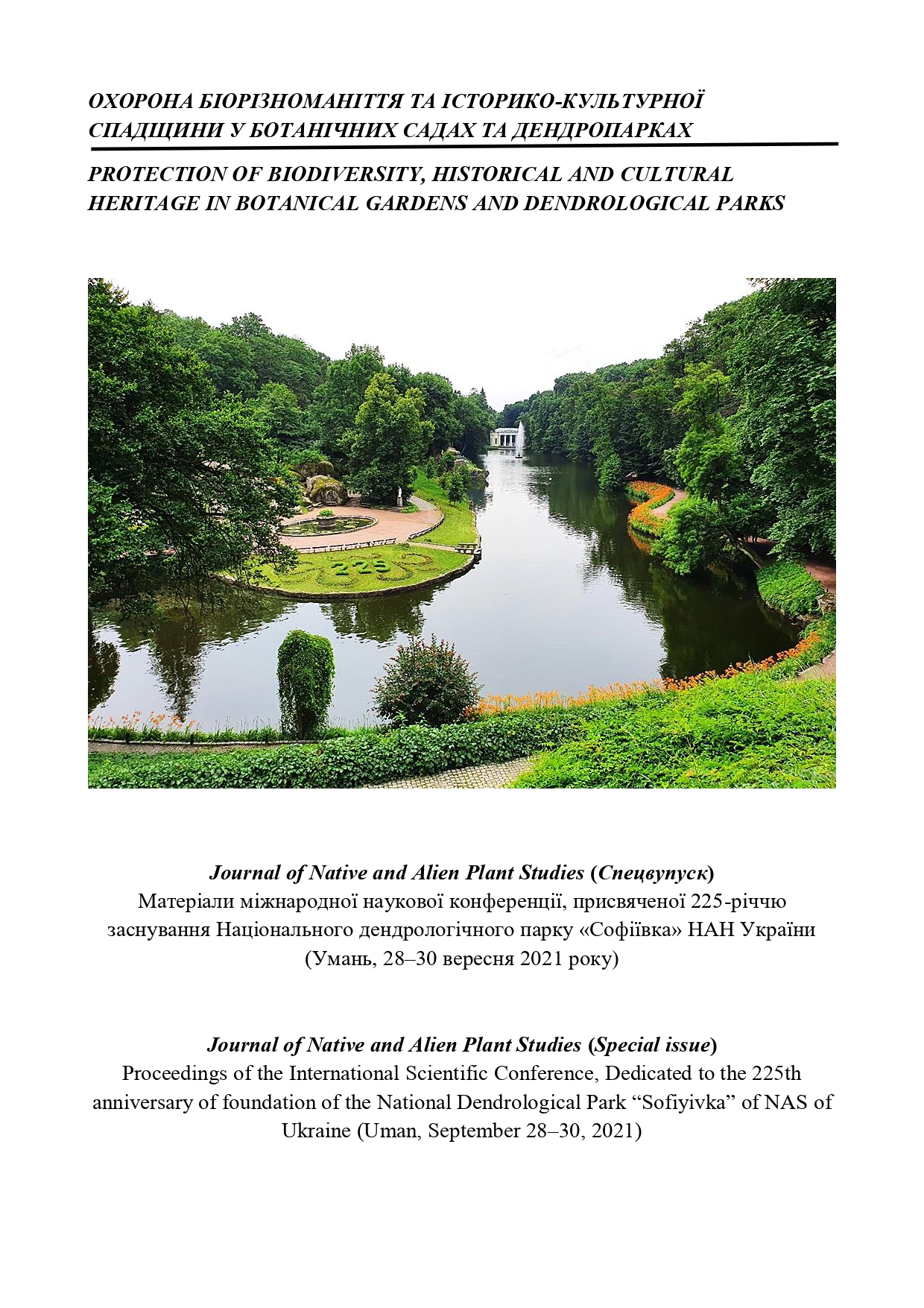Karyotype and plasmotype characteristics in wheat-rye hybrids with the different structural organization of the nuclear genome
DOI:
https://doi.org/10.37555/2707-3114.1.2021.247730Keywords:
пшенично-житні гібриди, хромосомно-заміщені лінії, каріотип, плазмотіп, С-бендінг, ДНК-маркериAbstract
Aim. Genome structure analysis and plasmotype identification in wheat-rye hybrids of various types (triti- cale, secalotriticum) and ploidy level. Mcth0ds. Cytological and molecular-genetic analysis. Rcsults. The karyotype and plasmotype analysis was carried out in 11 stable lines of secondary recombinant hexaploid triticale with the introgression of D-genome chromosomes of the wheat (A/B/DRR, 2n = 6x = 42), 14 stable and highly productive secalotriticum lines of F6–16 generations (Secalotriticum, S/RRAABB, 2n = 6x = 42), 9 stable lines of tetraploid triticale (A/BRR, 2n = 4x = 28). By means of differential chromosome staining, the chromosomal composition of the experimental material was characterized and the intergenomic substitution and translocation of chromosomes were detected. The PCR-RFLP analysis of the 18S/5S mitochondrial (mt) repeat and the ndhH-region of chloroplast DNA showed that these organ- elle DNA regions are in the homoplasmic state and belong to rye-type cytoplasm in secalotriticum lines and wheat-type cytoplasm in tetraploid and secondary recombinant hexaploid triticale lines. C0nclusi0ns. Cytological and molecular genetic analysis revealed significant genetic diversity of the created gene pool of wheat-rye hybrids by nuclear-cytoplasmic structure. The synthesized linear material of wheat-rye hybrids may be used in cytogenetic research and practical breeding.
Downloads
Published
How to Cite
Issue
Section
License

This work is licensed under a Creative Commons Attribution-ShareAlike 4.0 International License.
The names and email addresses entered in this journal site will be used exclusively for the stated purposes of this journal and will not be made available for any other purpose or to any other party.
Responsibility for technical content and for protection of proprietary material rests solely with the author(s) and their organizations and is not the responsibility of the publisher, journal or its Editorial Staff.
The main author is responsible for ensuring that the article has been seen and approved by all the other authors.
It is the responsibility of the author to obtain all necessary copyright release permissions for the use of any copyrighted materials in the manuscript prior to the submission.

